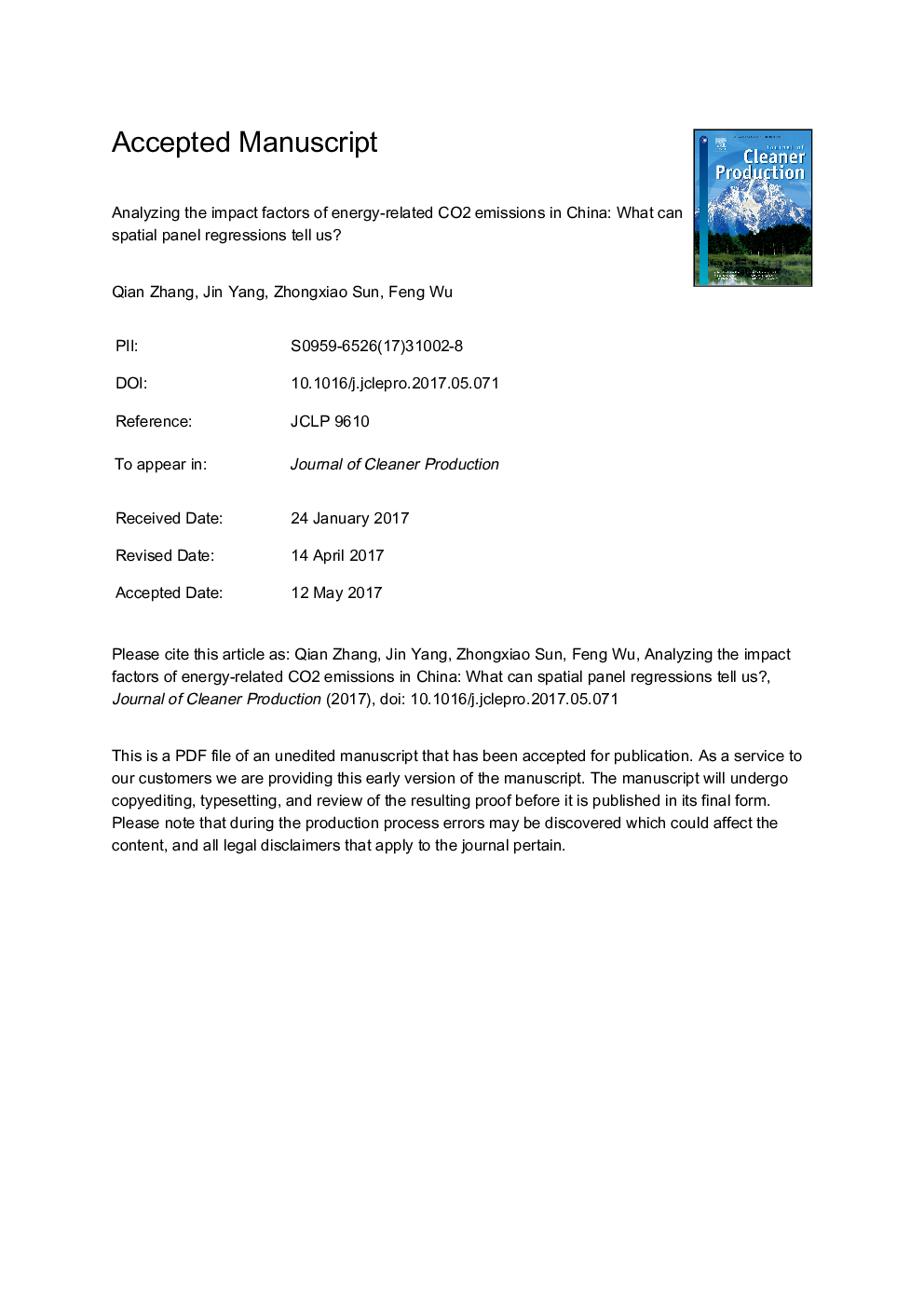| Article ID | Journal | Published Year | Pages | File Type |
|---|---|---|---|---|
| 5480908 | Journal of Cleaner Production | 2017 | 29 Pages |
Abstract
China produces a huge amount of CO2 emissions that need to be reduced to comply with international commitments. Identifying the driving factors is critical for achieving mitigation targets and transiting toward a low-carbon economy in China. This study is one of the first few attempts to apply panel data and spatial econometrics models to analyze the spatial dependence of province-level CO2 emission intensity and the economic drivers of such emissions. First, we conducted a systematical review of the development of spatial econometrics. Second, we generated a panel data set about energy and socioeconomic development of 30 provinces and municipalities in China from 2005 to 2012. Next, we chose the most appropriate model to explain the predominant factors of energy-related CO2 emissions based on a series of tests of the spatial econometrics models. The results suggested that technology improvement, adjustment of industrial and energy structures, and environmentally friendly behaviors and patterns of consumption of habitants play an important role in CO2 emissions mitigation. The results also revealed that CO2 emissions had strong spatial spillover effects, which indicate that policies adopted in one province will affect policy-making in neighboring provinces, implying that provinces need take combined action to balance climate change mitigation and economic policy goals.
Related Topics
Physical Sciences and Engineering
Energy
Renewable Energy, Sustainability and the Environment
Authors
Qian Zhang, Jin Yang, Zhongxiao Sun, Feng Wu,
